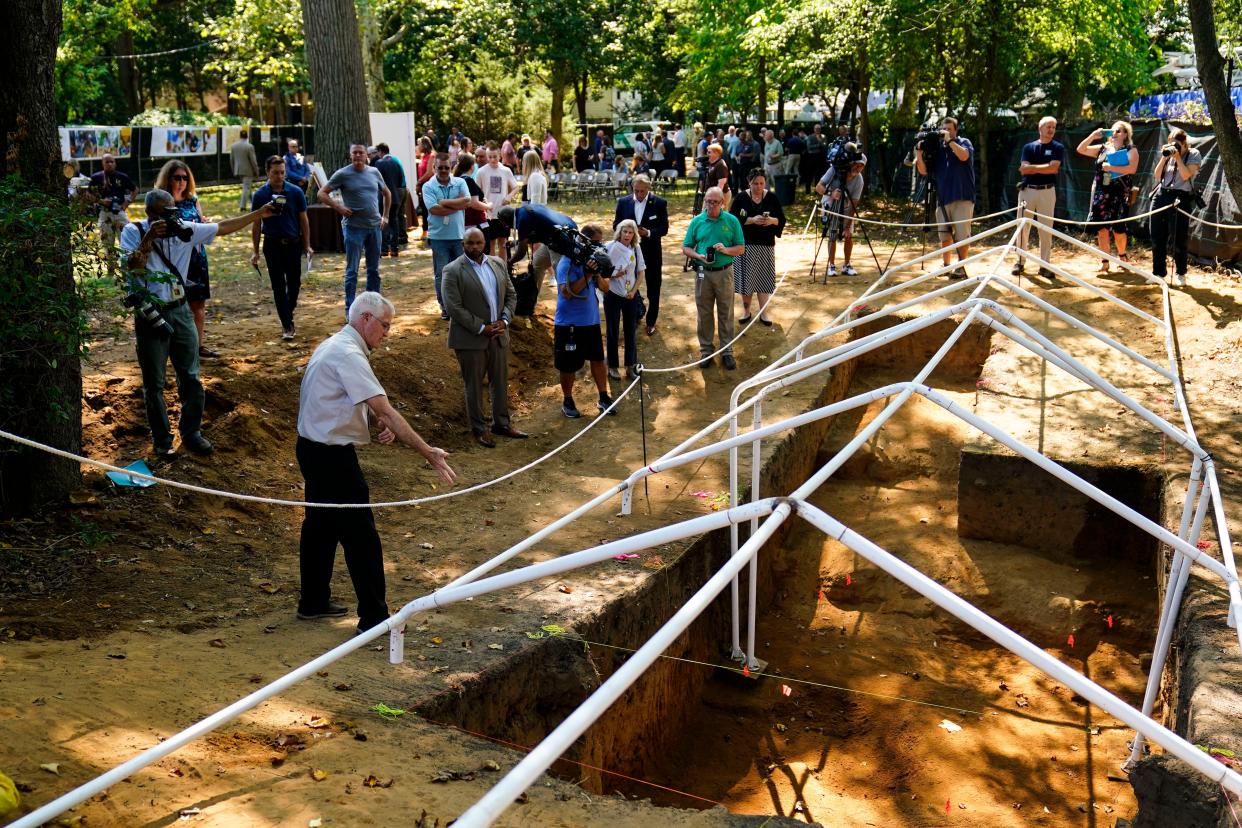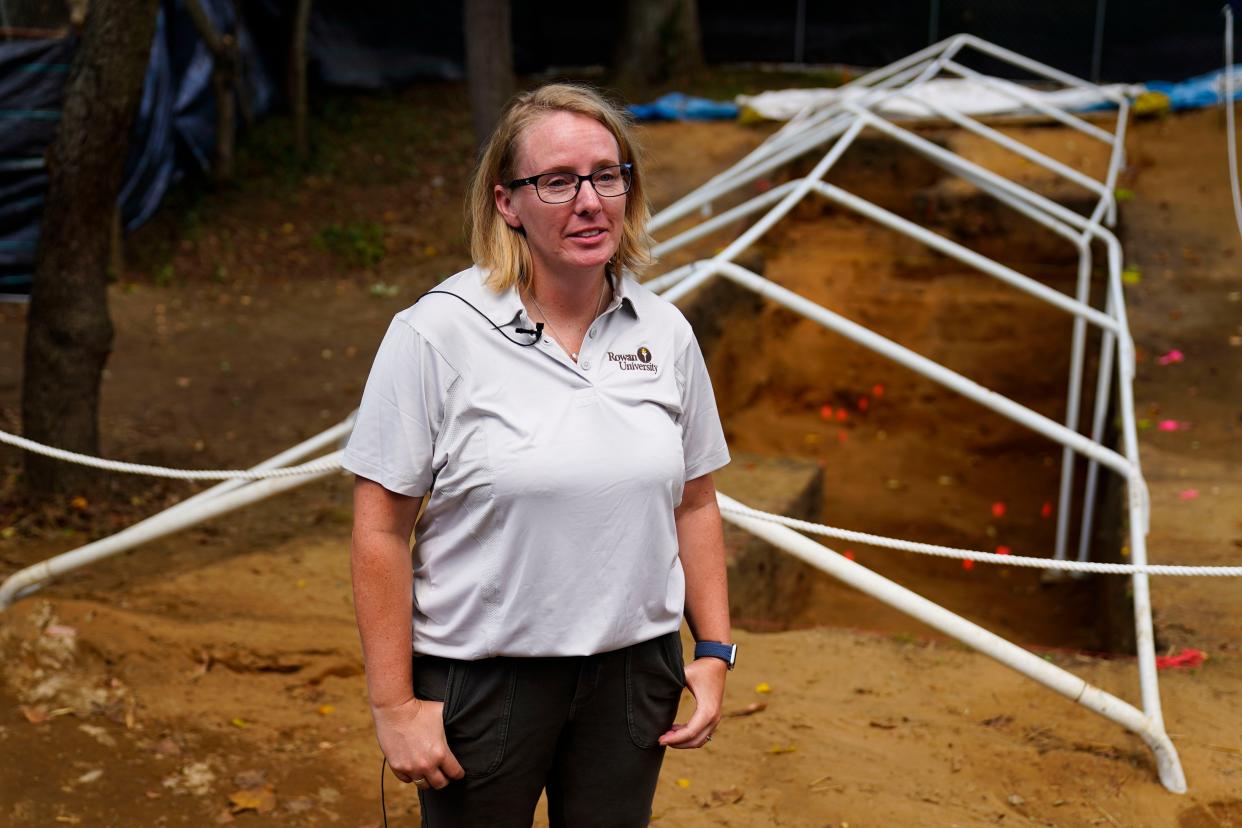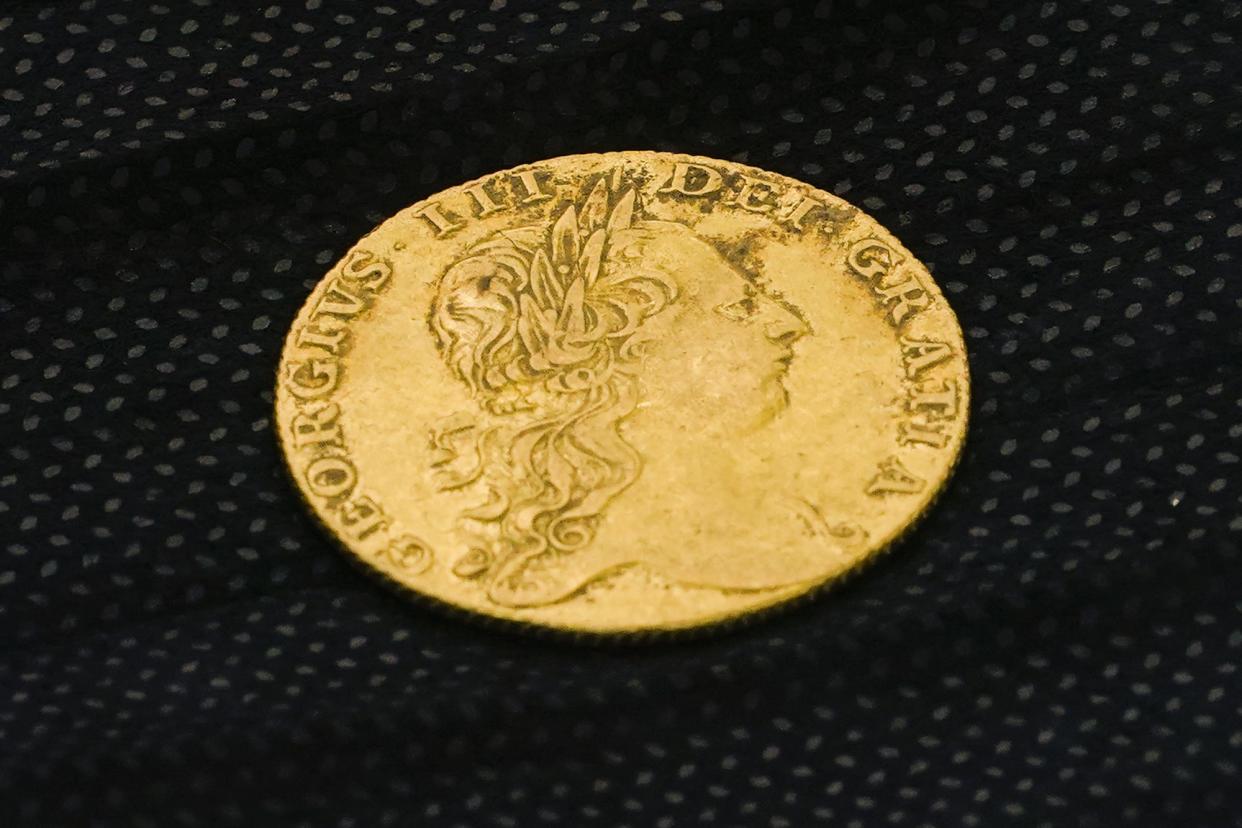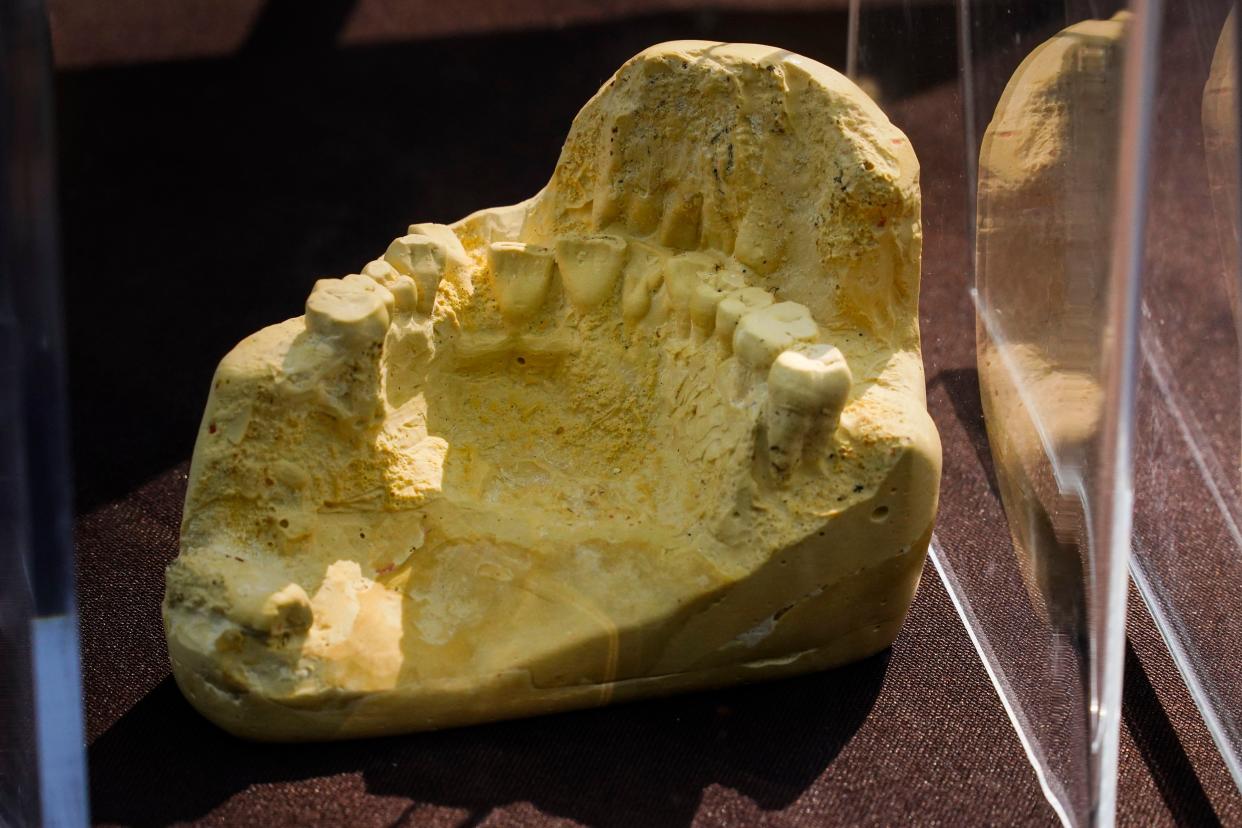Remains of Revolutionary War soldiers unearthed in New Jersey at site of 1777 battle
Researchers in southwestern New Jersey may have unearthed the remains of more than a dozen military mercenaries who fought for the British during the American Revolution, a major discovery that may shed new light about our nation’s bloody fight for independence.
Rowan University historian Jennifer Janofsky said Tuesday that her team’s recent find at Red Bank Battlefield Park is an “extremely rare” experience unlike anyone in her field would expect to see in their career.

Wade Catts, principal archaeologist for South River Heritage Consulting of Delaware, speaks with members of the media and officials at the Red Bank Battlefield Park in National Park, N.J., on Tuesday. (Matt Rourke/)
“Most of our visitors don’t have a great understanding of who the Hessians were or why they were here, so one of our goals is to work with the public and tell their story,” she told the Daily News.
She’s referring to the 30,000 well-trained, well-equipped German soldiers contracted by the British to stomp down American revolutionaries at battlegrounds like Fort Mercer, where the Battle of Red Bank took place in 1777.
During that fighting, which Janofsky calls “the biggest upset” of the Revolution, 500 scrappy patriot fighters — 10% of whom were Black — were “grossly outnumbered” by nearly 2,000 Hessians. Researchers expect further testing to confirm their expectations.
It’s believed that only 14 Americans died in the battle that killed nearly 380 German auxiliaries. The crucial conflict delayed British forces attempting to move supplies up the Delaware River and in to Philadelphia.

Rowan University public historian Jennifer Janofsky speaks with members of the media at the Red Bank Battlefield Park in National Park, N.J., on Tuesday. (Matt Rourke/)
Archaeologists and historians felt they’d discovered something special when one digger came across an extremely rare 1766 King George III coin, which would have been a British soldier’s compensation for a month of fighting. Then in June, Janofsky said, researchers struck something bigger than gold.
“One of our volunteers who was digging said, ‘I think I have a bone,’” she recalled in a summary of the dig published by Rowan University.
It was a human femur that had likely been buried 245 years ago.
“And … everything … stopped,” she recalled.

Shown is a King George III gold guinea, discovered in an excavation site at the Red Bank Battlefield Park in National Park, N.J. (Matt Rourke/)
By late July, a dozen mangled skeletons had been recovered. Also found during the excavation were musket balls, canister shot and a uniform knee buckle, which tested positive for human blood.
Principal archaeologist Wade Catts called the Red Bank Battlefield findings “remarkable” in their rarity.
“You can find Revolutionary War hospital burials, but not battlefield burials,” he said in a video recorded at the burial site. He estimates 10 or fewer such sites exist in the U.S.
The discovery will help researchers learn more about the people who participated in this very violent chapter of the Revolution. Janofsky said the German consulate has been notified of the discovery, but has yet to reply.
New Jersey State Police forensic units are extracting DNA from bones and teeth to aid in identifying remains. The Hessians who perished during the battle likely met with an unpleasant end.
While various factors may have played into the poor conditions in which many skeletons were found, Janofsky believes those who died on the battlefield may have been mutilated.

A casting made of human remains discovered in an excavation site at the New Jersey site. (Matt Rourke/)
“We know there were amputations and decapitations during the battle,” she said. “This is 100% consistent with the violence of this battle.”
Part of the reason photographs of the bodies found in Red Bank haven’t been released is due to the “particularly violent” methods of their demise.
“It has been a physical challenge for archaeologists and historians, and it’s also been an emotional challenge,” Janofsky said.
The remains were said to have been located fewer than 5 feet underground. According to Janofsky, exhuming human remains was not part of her plan when she secured a $19,000 New Jersey Historical Commission grant to initiate the research leading to her historic discovery. Gloucester County officials also committed $30,000 in funding for the archaeology project.
Fort Mercer was destroyed in November 1777 when American revolutionaries abandoned the outpost.
“The Revolution wasn’t a sanitized event,” Janofsky said. “It was bloody. It was violent.”
Learning more about the soldiers who died fighting at Fort Mercer will help historians humanize what happened at Red Bank Battlefield Park.
“Who were these people, where were they from?” she said.
With News Wire Services
